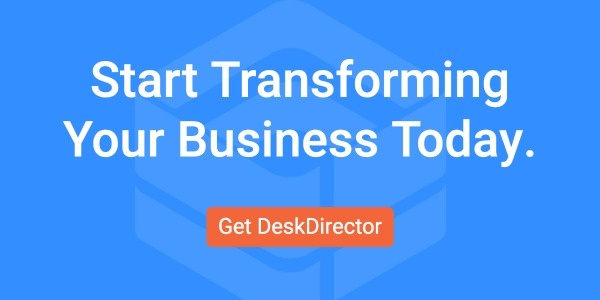As of 2020, 30% of companies are still considered behind in technology adoption and innovation.
Ensuring that your business and IT team are evolving along with technology means consistently monitoring and updating best practices, ITSM tools, and SOPs. Sometimes, that also means adopting entirely new software to fill service gaps and boost efficiency.
But where do you even start when it comes to determining software needs, picking the right ones, and then helping your team with the Herculean task of new software adoption and implementation?
This guide will help you select the right software for your company and use ITSM tools to ensure that new software adoption goes off without a hitch.
Should You Adopt New Software?
The first thing you’ll want to think about when considering new software is the “why.” What gaps are you seeing that could be filled with a new system? How many employees or departments will be helped in the long-term by this change?
A great way to answer these questions is by talking to your IT team. Receiving input from the people directly working through day-to-day tasks will provide clarity on possible problems and help identify the gaps that new software could help fill.
Once you've defined the problem, it's time to figure out what solution your team needs. Maybe it's easy—you just need a new piece of hardware or software program to fix a singular issue—or maybe there are other factors involved, like budget or pre-existing tech stack that will require integrations.
No matter how long it may take to identify what gaps need to be filled, and what the best way to fill them is, it’s important to make sure all relevant parties agree on what changes your new software can help with from both a grassroots and an overall business perspective.
What to Consider When Searching for New Software
Once you determine how your business and techs would benefit from new software, it’s time to find the right solution.
To avoid getting lost in the forest of available software options, it’s important to narrow down your list by focusing on what features will be most impactful to your success. When looking at vendors, be sure to consider:
- What features are most important to you?
- What software are your competitors using?
- What support is offered from your vendor options?
- Do the vendors you are considering have positive reviews and other proof points from existing customers? (and where applicable, what did they pay?)
- Does the software you’re considering offer easy integrations with your current tech stack?
By asking the right questions, you’ll be on the right path towards finding the best software to fit your needs.
Understand That Your IT Team Might Resist
Once you decide on new software, it’s important to be prepared for the inevitability that your IT team might be resistant of its implementation. The reason for this is simple: they are comfortable with the old software or process and have deep knowledge of it and how it connects to all other existing solutions. Additionally, many IT teams feel like their department works in a silo, meaning that any change from a company-wide perspective can be perceived as unnecessary or disruptive to their workflow and responsibilities.
In order for your business to succeed under these circumstances, you need to proceed with care when introducing new systems into the workplace. Be prepared to explain how each employee and team will fit within this new process and how it will contribute to the overall efficiency and success of your organization. Involving affected parties in the early stages of selecting a new software can help avoid confusion and resistance.
Training and Onboarding Your IT Team
To make for a seamless transition, educating your IT team about the new software is critical. In order for implementation to go smoothly, employees have to understand how to use the new systems.
The good news is that most ITSM solutions offer self-help resources and training options to assist in a smooth onboarding. That means videos, knowledge bases, and more to help employees become acclimated to new procedures and features, like custom client portals, ITSM and ticket resolution procedures, or SOP management.
This training will help your team understand why this new software is necessary, how its automation features will improve day-to-day tasks, and provide insight on how much time techs will save through this change. The right software will be easy to use—it won’t take long until your team identifies new, easy ways to automate processes.
Once you've identified a pilot, it's time to get the most out of it. You can use the pilot to test your team's workflow and communication with stakeholders. You can use it to ensure that training is thorough and effective, and ensure that support for the software is sufficient for all users. Finally, by testing both the software itself and your adoption process, you'll be able to make sure your organization is ready before full deployment—and that means successful implementation!
Moving Forward After New Software Implementation
Once your team has successfully adopted new software, what’s next? How can you continue to make sure the software is helping your team grow in productivity without any major glitches?
Seeking out feedback is a great way to monitor how new software is doing. Get input and feedback from techs who are using the product through surveys and conversations.
There's a lot of value in getting input and feedback from the people who will be using your new software. They'll be able to tell you what problems they encounter, how the product works best for them, and how it would benefit from improvements. You can also gain insights into their needs that you may not have considered when planning out your project.
You should also collect data about user behavior before, during, and after implementation to see how efficiently techs and clients are using ITSM tools.
It’s also important to make sure that users keep up with best practices and training so that they’re constantly growing and improving when using new software. Updating SOPs when needed and maintaining a strong SOP management system will help keep techs in-the-know on what procedures they should be following so that they can tap into the software’s potential.
Conclusion
There are a lot of things to consider when you're choosing a new software product. The most important thing is to make sure it meets your needs, but even that's not enough! You also need to be able to implement it successfully—and that means finding out what works and what doesn't work from the people who are actually using the software.
As long as you follow a strategic framework for selecting and implementing new software, then a robust solution could do wonders for your business.
If you’re interested in a solution that has the tools and resources you need to make implementing well worth it, sign up to try DeskDirector.









